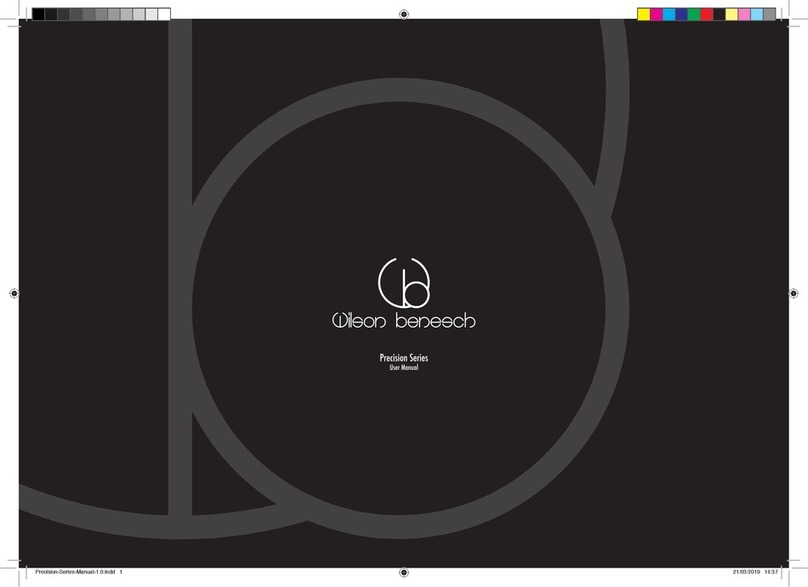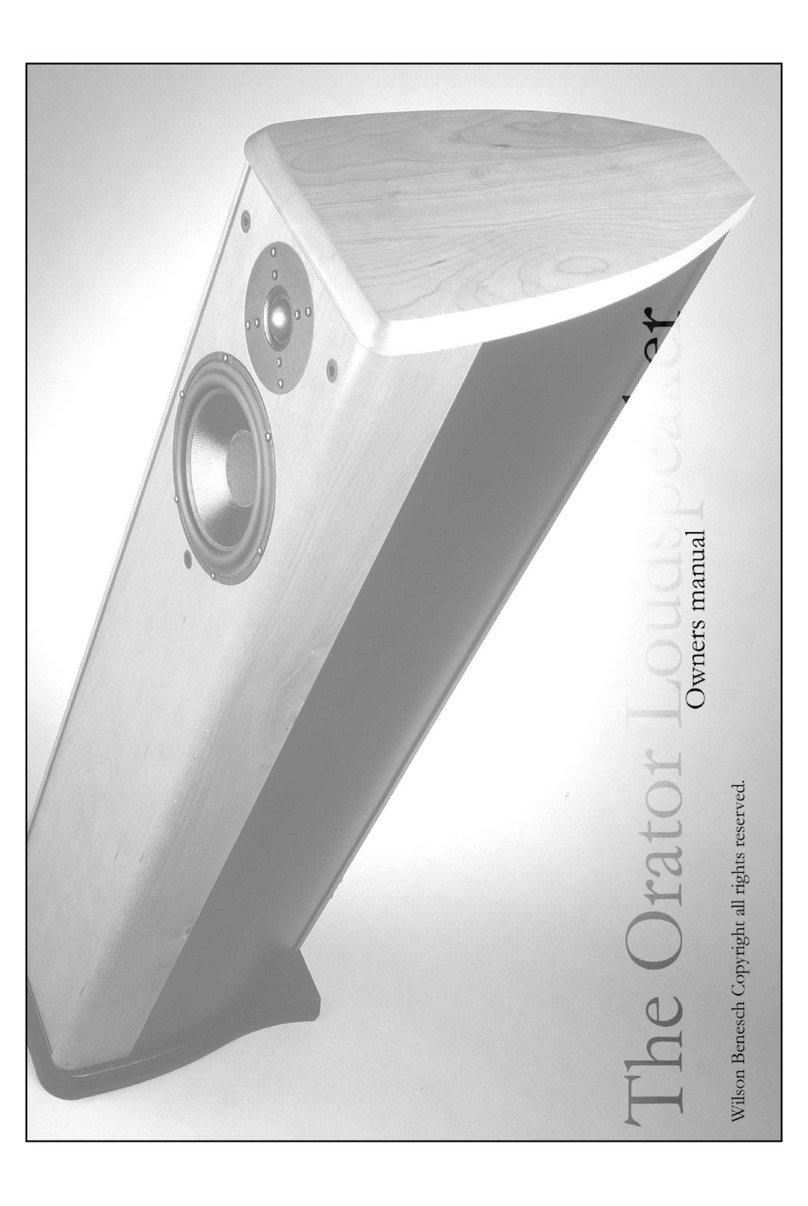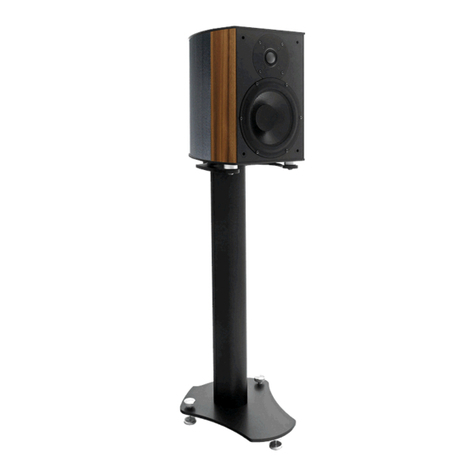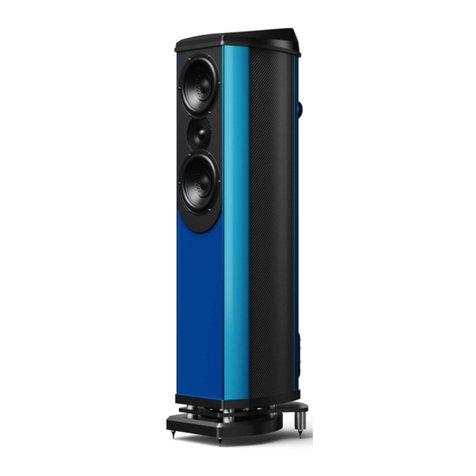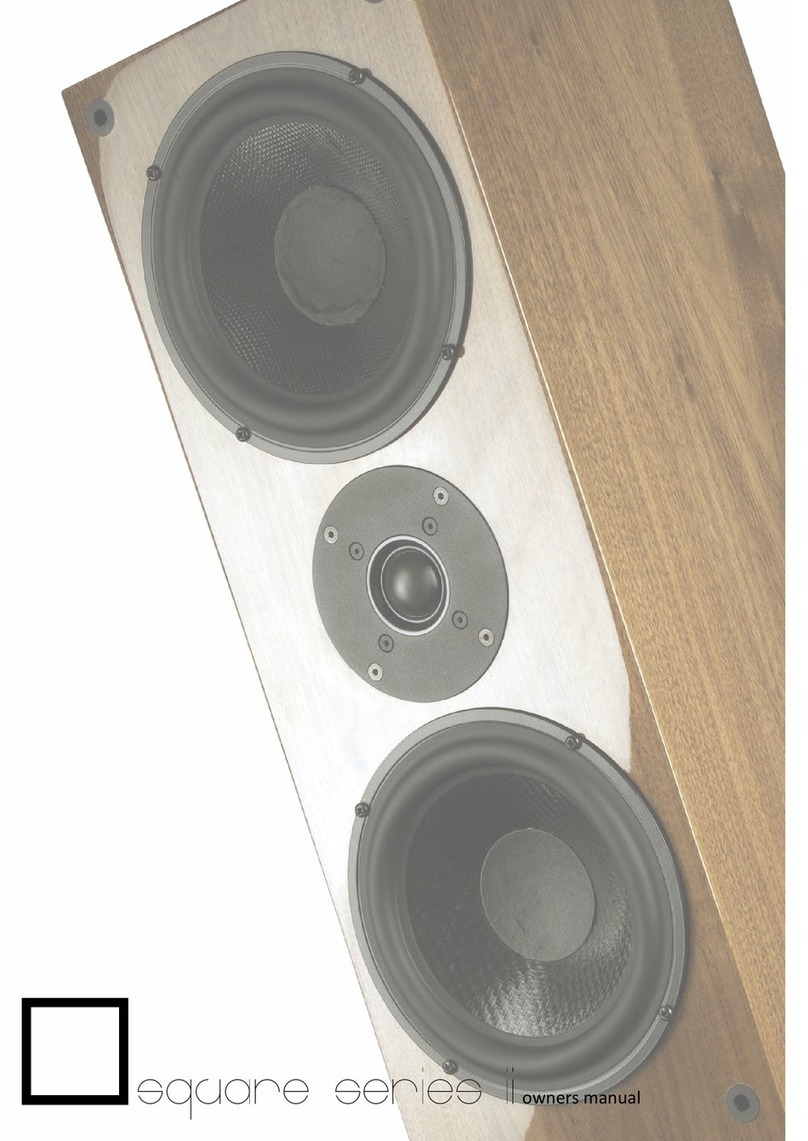The Bishop was developed with two discrete isolated enclosures for the low
frequency, mid range and high frequency systems. This immediately reduces
corruption from cross communication. A two ox system also provides other
advantages in terms of manufacturing and installation. Curved pre stressed
Advanced Composite Technology panels are key structural components in oth
ca inets. An organic moulded car on component has een developed to facilitate
low defraction and negligi le resonance from this critical part of the structure. The
form and angle of rake eliminates the potential for ceiling to ox top interactions.
The whole system is mounted on a su stantial foot system which also houses the
adjusta le crossover system whilst providing a high degree of sta ility. All
components are manufactured in house with the exception of the tweeter which is
specified to Wilson Benesch specifications and mounted in a simple ut very
effective damping ring on the alloy MDF composite affle structure. It provides
clearly defined information from 5kHz to 20 kHz via a single inductor capacitor 1
st
order crossover network. Its position has een derived from trials which focused
upon phase coherence. The Mid range units are driven well within their prescri ed
specification and are controlled y a andpass filter. All low frequency information
eing devoted exclusively to the Iso aric Tactic® system. Significantly low
frequency energy is provided y drivers that are almost identical to the mid range
systems. This dictates that integration and phase coherence will e virtually
guaranteed. To further overcome the enormous challenge of low frequency
reproduction these units have een mounted in a clamshell composite configuration
which we call the Isobaric Tactic®. By exploiting the principles of the Iso aric
loading the volume required y the low frequency driver array, ( eight in each
channel ) has een minimised despite this advantage it is still five times greater than
that of the A.C.T. One Loudspeaker low frequency enclosure. This has een
achieved y extending oth height and depth ut not width. This important detail
maintains the slim forward facing profile which is crucial for imaging and
transparency. Moreover, the exterior has een extended without accepting the
unaccepta le compromise of the flat surface. Low frequency production is extended
down to 30Hz without the use of the ported enclosure loading which is
compromised from the outset due to the highly resonant characteristics of the port
output which is of course is always 180 degrees out of phase. This delay is
eliminated in the infinite affle arrangement. The speed of the attack and decay are
the main enefactors as a result of this approach.
The Tactic® Dynamic Driver.
Early in 1996 a 12 month feasi ility study concluded that currently availa le driver
technology would not e capa le of taking the companies am itions forward. The
study indicated further, that significant potential for development existed ut that it
would e a major under taking. The decision was taken for us in many ways, the
moment we realised how innovative the final product would e. At that time our
attentions were focused on the creation of low frequency information and in
particular the a ility of that system to integrate well with the improved mid range
performance. A variety of diaphragm sizes were assessed including race track types.
Orientation was also studied, side firing nota ly eing the most un-popular. Loading
the system with transmission lines was appraised as was the closed ox. Many hours
of research was devoted to the
search for a solution to the pro lem. The reakthrough was made when the Iso aric
method was explored. Using B stock Scan drivers in a hastily assem led MDF ox,
for the first time, it was instantly recognised as the right solution. An o vious
answer in
retrospect for with drivers of similar physical proportions to the mid range system
matching would e axiomatic. For the first time we could hear highly integrated,
high performance reproduction that was un-questiona ly superior to the A.C.T.
One.



